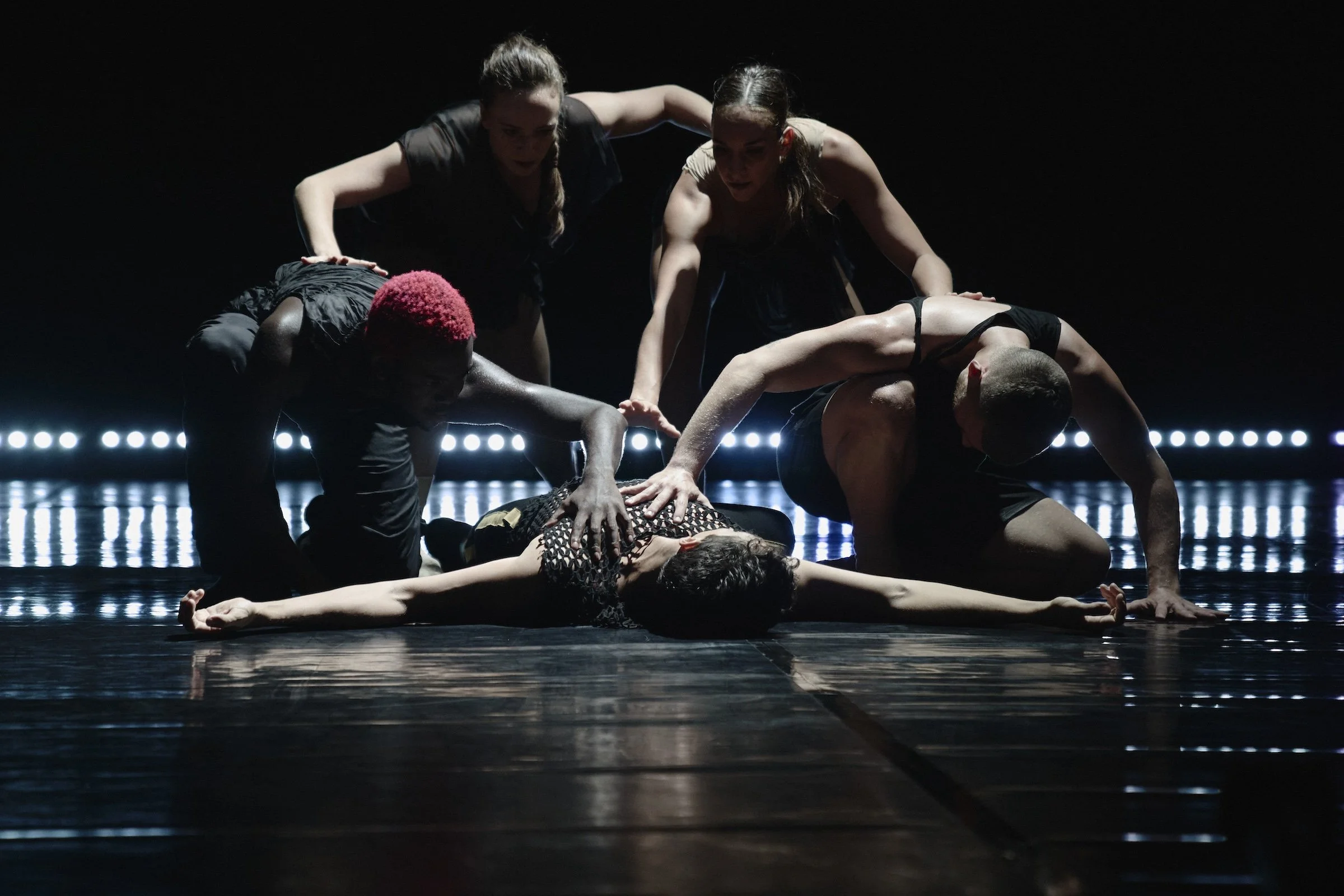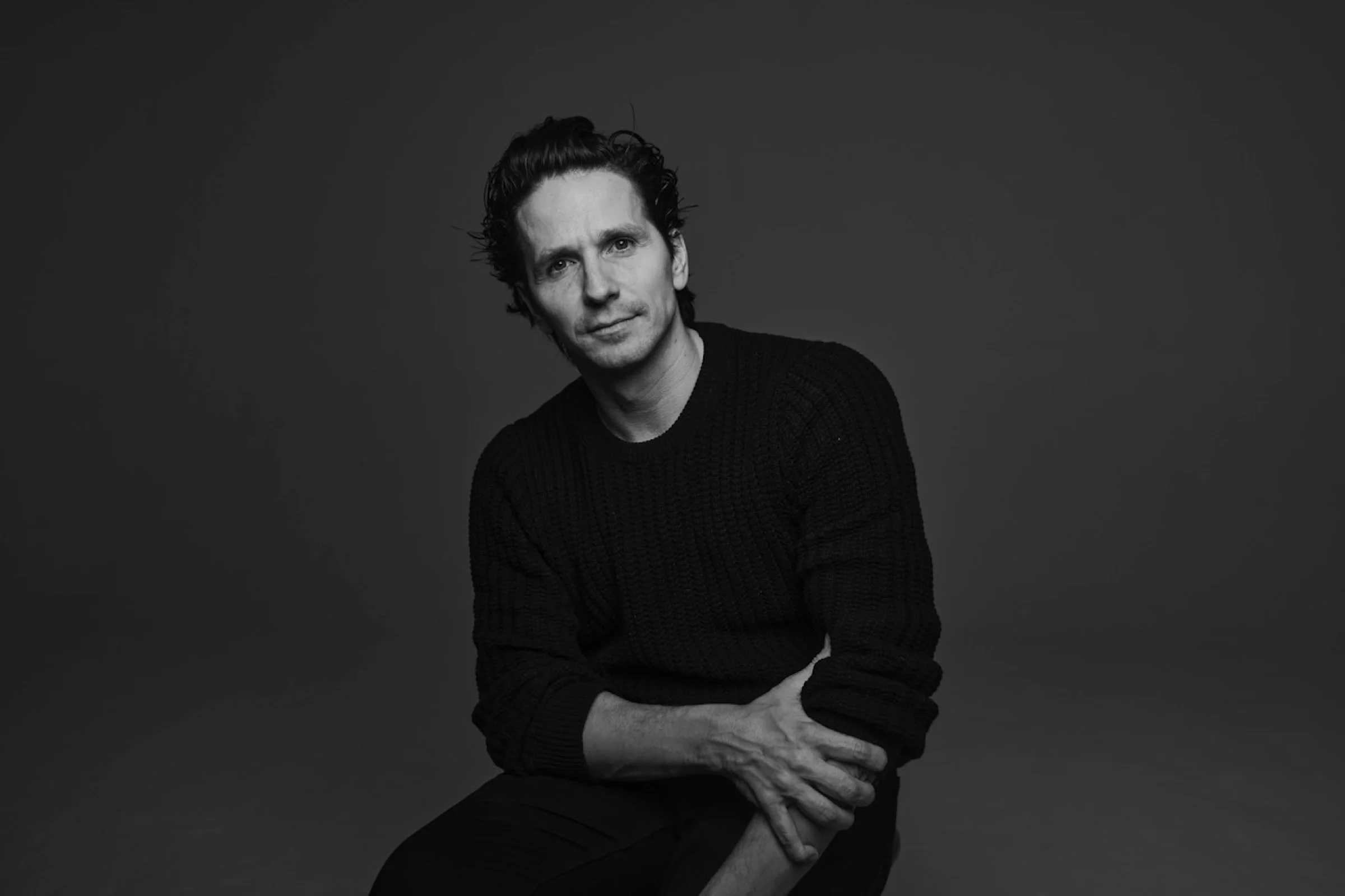Stir Q&A: National Ballet of Canada star Guillaume Côté finds new freedom in X (Dix)
His new production, debuting here at DanceHouse with his Côté Danse, explores home—a theme borne directly out of the pandemic
Cote Danse’s X (Dix). Photo by Sasha-Onyshchenko
DanceHouse presents Côté Danse’s X (Dix) at the Vancouver Playhouse on March 22 and 23
LATE IN FEBRUARY, the National Ballet of Canada made an announcement that rippled quickly through the dance world: its beloved principal dancer Guillaume Côté is going to retire at the end of next season. But with that ending comes an exciting new journey—a project Vancouverites will get its first taste of when his Côté Danse, founded in 2021, visits the DanceHouse program next week.
It’s bringing the sculpturally powerful, five-dancer X (Dix) that he’s choreographed. Set to the cinematic, synth-rock sounds of Son Lux, it’s a departure from much of the ballet that the Lac-Saint-Jean-born Côté is known for. Exploring home as a grounding force and drawing on the myth of Odysseus, it grew directly out of the 42-year-old dance artist’s prolonged pandemic experience.
Stir caught up with the celebrated artist—inarguably one of the country’s greatest male ballet dancers—in Toronto, where he lives with his wife, fellow National principal dancer Heather Ogden, and their two children. The energized Côté talked about home, Greek mythology, and what it feels like to step away from the “odyssey” he’s had at Canada’s most prestigious ballet company.
STIR: Guillaume, you've really been in the news a lot in the last few weeks with your retirement. Congratulations on this transition. I can imagine there's a mixture of emotions around it.
GC: Absolutely, yeah. But at the same time, I've had an incredible career and a sense that I've been very fortunate. I was able to really live my classical dance career to its fullest, and now, I'm super excited to jump into a new adventure. It’s one of those things where it’s bittersweet, but I’m 100 percent ready for it—although there's definitely going to be little heart-pinching moments, getting ready backstage with all my colleagues. I’m going to miss the National Ballet greatly, because it really is a wonderful place with wonderful repertoire. But I'm not going to miss, you know, the pain and the manoeuvering the injuries. The form of classical ballet is such a strict form that you have to kind of squeeze your body into. And it’s very hard to keep that going as you age because your body is less and less willing to go into those specific forms.
STIR: I want to tie this into X (Dix), because I was thinking about you leaving home in Northern Quebec to study at the National Ballet school in Toronto when you were only 11. And I find that quite poignant when I think about the theme of this show. I wondered if you thought maybe that experience of yearning for home, going off to do ballet so young, had anything to do with this work?
GC: You know, absolutely. I think in my whole life I’ve asked that question. And I think there’s been an unsettled kind of emotion within me that comes from my youth for sure—from being being a kid that was sort of… Not homeless, because you sort of rediscover other homes, but my home in, like, Lac-Saint-Jean sort of disappeared really early on. That being said, I think I was always looking for home, looking for a place for so long for myself, and I never really quite felt at home in Toronto. And then recently, especially having children, I think was the second thing that really made me wonder about this whole idea of home and what is it and how do you create a home? And how do you create a home for your kids, how do you create a home for yourself? And this whole exploration that happened during COVID: there was a lot of questioning around us being stuck at home. And home actually became a terrible place in a way—like it became a prison in a weird way.
STIR: Wait—how old were your kids during the pandemic?
GC: Two and four.
STIR: Oh my…
GC: Yeah, so it was a lot of logistics and we worked really hard to find normalcy for the kids. But it was a really difficult time. I mean, speaking from the standpoint of having enough to eat and to survive and everything, we were lucky in those terms, so I don’t want to sound ungrateful. But at the same time, I think we all have different challenges, and one of our challenges was definitely to keep the kids busy, and also with us being inactive when we were kind of racehorses in some ways. As dancers, we are these beings that need physical activity. And we were sort of completely deprived of all that for two years.
So this work came out of a reflection of all of that. Right after COVID, there was some serious questioning about what home is and where is home, and how do we define a place that we feel is a safe place? But it was a loose exploration also. It’s probably important to say that it’s an abstract representation.
STIR: Was Homer’s Odyssey something you dove into during the pandemic as well? Did you revisit that myth or start reading it again?
GC: Yes—actually, I had a friend who’s always pushing Greek on me, kind of like a Greek mythology dealer! He studied Greek mythology at university, and so whenever I speak to him about projects, he's sort of always relating it back to Greek mythology in a weird way. So that was a fun exploration, but coming out of the pandemic, it was also important that the dancers dance, so I didn't want it to be a cerebral experience. I wanted it to be a physical experience. So the work has its foundation in the themes of Odysseus, but it's a raw, very physical interpretation of it and I wanted to let to let the choreography speak for itself.
Guillaume Côté. Photo by Matt Barnes
STIR: I'm interested when you use words like “raw”— and X is definitely such a physically powerful piece. I wonder what working outside of the National Ballet allowed you to do? Did this let you to show a little more of that raw side?
GC: Well, you know, the thing is, there will always be ballet in me. That's for sure. I’m not going to ever sort of push it and shake it all off—like Taylor Swift! [Laughs.] I think it's in my DNA. But what this experience, and Côté Danse, has allowed me to do is take the vocabulary and think about what I like from classicism and this idea of virtuosity—and also the extreme musicality, as well. That’s another thing that I think in classic ballet we tend to have, just because it's required: splitting a note into two is rarely something that we’ll do in contemporary dance, right? But in classical ballet, like Swan Lake, I’ve worked with ballerinas who will literally, you know, decide that you're on the “front end” of the note or the “back end”. So I come from that world. And so when I bring contemporary work like this to life, I still have a rigour of the classical vocabulary, of the classical musicality. But then I let it blow up! It's kind of classical ballet on crack, where finally I don't have to stay within the form.
Also, the dancers that I have are these fabulous contemporary movers who, ironically, have kind of rejected a bit of the classical ballet form, because they wanted to do more contemporary dance, right? Contemporary dance and classical ballet are two very different skills and I think we need to shed a little bit of this idea that you can be either classical or contemporary, or that being classical is harder than contemporary. Those things are wrong. Being a contemporary dancer is a different specialty. So my dancers are much more specialized in contemporary dance, but here’s me dragging them back into the classical form! And I'm asking them to kind of reincarnate those very strict, very strict formulas, but, as contemporary movers, to remix it to be any body type—any way that your body falls, you can still obey the rules and it still looks fantastic. To me it's quite thrilling, because there is, I would say, an acceptance and a welcoming. Like, it's nice to see non-classical dancers dance classical form, and pepper it with something that feels new.
It's interesting, because in ballet, we're getting more and more obsessed with the form and the tricks—those things like the the acrobatics of the ballet vocabulary. What's been beautiful in working with contemporary dancers is that it’s not about what they do. It’s how they do things. And they’re always asking questions like, “How would you like us to do that?” As opposed to, “Okay, can we now do 16 turns!”
STIR: Yes, watching clips, it just feels so fresh. And now I understand why.
GC: At Côté Danse, I’ve found really, really great people and collaborators. They're intelligent. They're highly educated in the form of contemporary dance, and I’ve found a really beautiful freedom having dancers who will be part of the collaborative process from the inside out. I mean, the classical world tends to be more hierarchal, right? People are usually slightly afraid and want to please the choreographer and there's this power thing that happens. Yeah, and usually they'll say, you know, “This arm is on one, and this arm is on three, and now do it again and do it again!” As opposed to in contemporary, there’s often a discussion—the choreographer is also, in a sense, an arranger and a gatherer of information of thoughts, of minds. And it's quite interesting. I mean, I still work very much like the classical world does: I make up all the steps and there are still sequences—they’re quite strict, but the form of how we work in the studio is really, really refreshing for me.
STIR: You talked about the intense musicality—how did you discover the music of Son Lux?
GC: During the pandemic, I stumbled upon their work and I had a common friend who knew one of the members of the band. During the pandemic, they released these three albums called Tomorrows and what I really love about their music is that they have a really wonderful way of taking it a little bit into pop, but at the same time, the rhythms remain incredibly complex. At the same time, they mix acoustic and electronic instruments together. Sometimes it goes into wildly organized chaos, and then gathers into this really beautiful kind of simple melodic rhythm. And so, to me, I found the music extremely rich. …So yeah, I think it gave a different flavour to the show, that's for sure. In a way, this was a project that we made coming out of COVID and I really just wanted to make something for so long that it was going to be fun and it was going to have an element of experimentation.
I never dreamed that it would do so well. So this particular project, I'm very happy to say that it's had a long life and and the show is successful because it's different. What's nice is this idea that we're blending a bit of mainstream, a little bit of this kind of electronic pop music with classical—or, like I said, classical remixed on crack—with contemporary movement. So it's an interesting blend of things. ![]()














